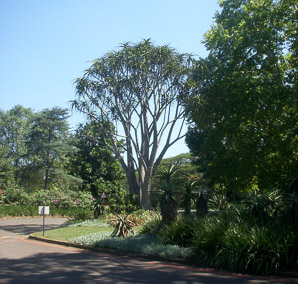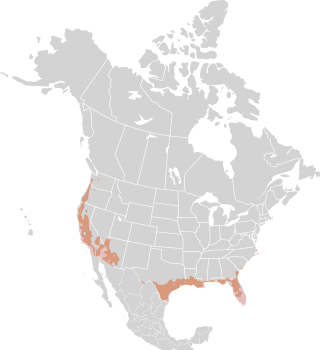
|
Aloe barberae Dyer Large tree aloe
This is Africa's largest aloe, a beautiful and unmistakable tree. It is found in the eastern regions of southern Africa: Mozambique, Swaziland and Mpumalanga, KwaZulu-Natal and Eastern Cape, South Africa. Its species name, barberae, is for Mary Elizabeth Barber, a plant collector who sent specimens of the plant to the Kew Royal Botanic Gardens. Identification: Trees are up to 49′ (15 m) high and 3′ (90 cm) in diameter. Eventually the tree forms a rounded crown, with leaves grouped in dense rosettes up to 5′ (1.5 m) in diameter. Leaves are dark green, roughly triangular in cross section but deeply channeled. The racemes (flowerheads) are conical, up to 2′ (60 cm) long. Individual flowers are 1-1¼″ (3-3.7 cm) long, and pale yellow, orange-yellow, or salmon-pink; tipped with green.
Online References:
The South African National Biodiversity Institute's web site, plantzafrica.com The Huntington Botanical Gardens
Aloe barberae description by Thomas H. Kent, last updated 25 May 2020. © FloraFinder.org. All rights reserved. |
8/9/2023 · Epworth School, Pietermaritzburg, KwaZulu-Natal, South Africa · By Benjamin Winslow Range: Zones 9-11:
|



